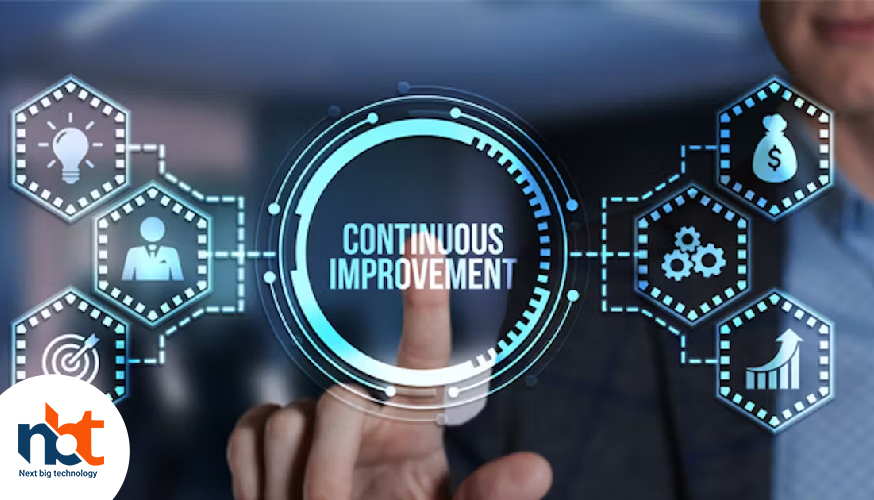In the fast-paced world of web development, successful project management is the linchpin that holds everything together. A well-executed project not only meets its deadlines but also delivers top-notch results. In this article, we’ll delve into the best practices for web development project management, guiding you through each step of the process. Whether you’re a seasoned pro or a newcomer to the field, these strategies will help you steer your web development projects toward success.
Table of Contents
1. Defining Project Goals

Every successful web development project begins with a clear understanding of its objectives. Define the project’s goals, its target audience, and the problems it aims to solve. Having a crystal-clear vision at the outset sets the stage for a smoother project execution.
2. Assembling the Dream Team
Your project team is your most valuable asset. Ensure you have a team with the right skills and expertise to handle the project’s unique challenges. Team members should complement each other’s strengths and work cohesively towards the common goal.
3. Clear Communication

Effective communication is the lifeblood of project management. Establish open lines of communication among team members, clients, and stakeholders. Regular meetings, status updates, and feedback loops are essential to keep everyone on the same page.
4. Setting Realistic Timelines
Setting unrealistic deadlines can lead to stress and lower-quality work. Work closely with your team to create a timeline that balances efficiency and quality. Be prepared to adjust deadlines as the project progresses.
5. Agile vs. Waterfall

Choosing the right project management methodology is crucial. While Waterfall is a linear approach, Agile allows for flexibility and adaptability. Consider the nature of your project and choose the methodology that aligns best with your goals.
6. Detailed Project Scope
A well-defined project scope document outlines the project’s deliverables, constraints, and assumptions. It prevents scope creep and ensures that everyone knows what to expect.
7. Budget Management
Managing finances is critical to project success. Create a detailed budget that includes all expenses, and monitor it closely throughout the project. Overruns can derail even the best-laid plans.
8. Risk Assessment

Identify potential risks and create a mitigation plan. Being proactive in risk management can save time and resources in the long run.
9. Utilizing Project Management Tools
Modern project management tools streamline the workflow, enhance collaboration, and improve productivity. Tools like Trello, Asana, or Jira can be invaluable.
10. Regular Milestone Check-Ins

Break the project into milestones, and regularly evaluate progress. Celebrate achievements and address any issues promptly.
11. Quality Assurance
Quality should never be compromised. Implement robust testing procedures to catch and rectify issues before they reach the final product.
12. Client Collaboration

Involve the client throughout the project. Regularly seek their input and feedback to ensure their vision aligns with the project’s progress.
13. Documentation is Key
Maintain detailed project documentation. It serves as a reference point and helps with troubleshooting and future improvements.
14. Post-launch Evaluation
After the project is live, conduct a thorough evaluation. Analyze what went well and what could be improved for future projects.
15. Continuous Improvement

Learn from each project and apply those lessons to the next. Continuous improvement is the hallmark of successful project management.
Conclusion
Effective web development project management is a combination of careful planning, open communication, and adaptability. By following these best practices, you can increase the likelihood of delivering successful projects that meet both client and team expectations.
FAQs
- What is the role of a project manager in web development? A project manager in web development oversees the planning, execution, and delivery of web projects, ensuring they meet their goals and objectives.
- How do I choose between Agile and Waterfall project management methodologies? The choice depends on the project’s nature. Agile is more adaptable, while Waterfall is better suited for projects with well-defined requirements.
- What are the consequences of poor project management in web development? Poor project management can lead to missed deadlines, budget overruns, low-quality work, and dissatisfied clients.
- Why is client collaboration essential in web development projects? Client collaboration ensures that the project aligns with the client’s vision and expectations, leading to a successful outcome.
- What are some recommended project management tools for web development? Popular project management tools for web development include Trello, Asana, Jira, and Monday.com
Thanks for reading our post “Web Development Project Management Best Practices ”. Please connect with us to know more about Web Development Project Management.










